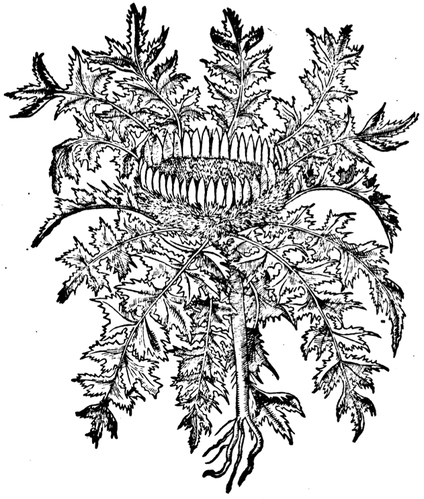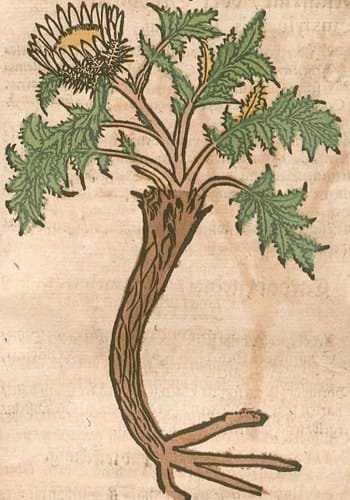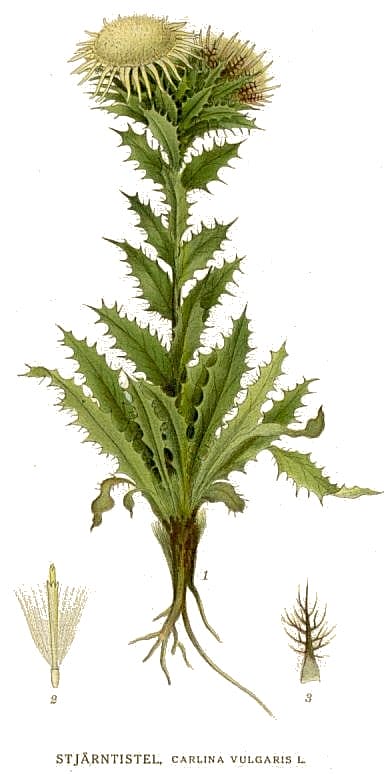Carlina, Carline Thistle
Chameleon, Leucoacantha, Radix Heracanthae

|

|
|
New Kreuterbuch, Matthiolus, 1563 |
Krauterbuch, Lonitzer, 1578 |
 (Illustration from «Bilder ur Nordens Flora», Carl Axel Magnus Lindman) (Wikimedia)
(Illustration from «Bilder ur Nordens Flora», Carl Axel Magnus Lindman) (Wikimedia)Botanical name:
Carlina vulgaris, C. acaulis (Dwarf Carline Thistle) and related species
Black and White types were traditionally differentiated
Parts used:
Root, gathered in spring; rarely the herb
Temperature & Taste:
Warm, dry. Pungent, Bitter, Aromatic
Classifications:
2A APERIENT MEDICINES
3Q. ANTHELMINTIC
Uses:
1. Clears Wind-Cold, Resists Poison:
-promotes Sweat
-Epidemic and Infectious diseases; ‘a famous thing against the Plague’ (Salmon)
-Venomous Bites, including Rabid Dog bite
-all types of Poison
2. Moves Qi, Promotes Menstruation:
-Amenorrhea; Hysteria
3. Strengthens the Spleen, Benefits Qi:
-nausea, bloating, indigestion
-obstructions of the Liver, Spleen or abdomen; hypochondriac pain
-it is purgative in full doses
4. Clears Damp, Promotes Urine:
-Edema; acute Urinary obstruction
-Lower Body joint pain; Sciatica; Cramps
5. Kills Worms:
-used by older practitioners; recommended by Mesue
6. Externally:
-root is chewed for Toothache
Dose:
Full doses are purgative.
Powder: 1–3 grams (1 scruple–1 dram)
Decoction: 3–6 grams (1–2 drams) or more
Substitute:
1. Fernie (Herbal Simples, 1897) says it is very similar to Elecampane.
Main Combinations:
1. Bezoardics (against Poison and Infection):
i. Carline Thistle root, Angelica, Elecampane, Burnet Saxifrage, Contrayerva, Swallow-wort, Fraxinella, Masterowrt, Valerian (equal parts), Alcohol (20 oz.). (Pharmacopoeia Generalis, 1783)
ii. Angelica root, Elecampane root, Carline Thistle root, Fraxinella root (1 oz. each), Myrrh (6 drams), Saffron (2 drams). Alcohol (40 oz.) (Pharmacopoeia Wirtembergica, 1798)
2. As a Carminative:
i. Carline Thistle root, with Elecampane, Rosemary, Marjoram, Fennel seed, Aniseed, Caraway, Cinnamon, Orange peel
Major Formulas:
Orvietanum
Theriac
Cautions:
None noted
Main Preparations used:
Tincture, Distilled Water, Saline Tincture
